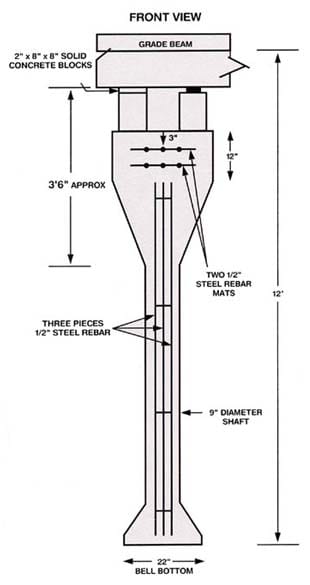Rain and your Concrete Foundation
Now that Texas has experienced two very hot any dry summer seasons in the last three years (2011 and 2013), What happens when the region begins to receive rain? Answer: Movement. The concrete slab foundation under your home is going to move – maybe a little, maybe more than a little, maybe a whole lot.
Let’s take a step back and look at the cause, which is clay soil. Most of eastern Texas and the southern United States have clay soils and concrete slab foundation rest upon these soils and rely on them for support. Clay soil is like a giant sponge – when the climate is hot and dry they will lose a great deal of water and when the climate is wet these soils will absorb a great deal of water. So the soil volume is repeatedly shrinking and expanding in volume throughout the years. Since concrete slabs rest upon the clay soils, and the deeper perimeter and internal beams are “submerged” into the soils, the shrinking and expanding movement of the clay soils put tremendous stresses on the concrete foundation.
So what happens when it Rains?
Well, What happened before the rain? Did the area experience hot, dry weather for an extended period of time? If so, then the clay soils have shrunk in volume and pulled away from the foundation. Usually this is most pronounced around the perimeter of the home. If the area of soil shrinkage is large enough then the weight of the home will cause a portion of the concrete slab to crack and collapse (settlement) until it reaches support – which is the shrunken soil. Now when it rains the soil will absorb the water and expand in volume. This will cause the soil and the foundation to move upward (uplift). The annual result is that a portion of the home slab foundation has cracked and collapsed (downward movement) and then risen (upward movement). This is when the homeowner will see the distinct warning signs of foundation damage such as cracked bricks, cracks in interior walls, and doors and windows that jam and stick.
Are all Home Foundations Vulnerable?

Unfortunately most home foundations in Texas are built with too little concrete and too little steel rebar to resist these forces of soil movement. State laws in Texas protect home builders from building under-engineered and under-designed concrete slab foundations. The homeowner is stuck with the financial burden of a damaged home foundation and collateral damage to the home. On the other hand, commercial builders are not protected by state law for building under-engineered foundations for commercial buildings. Commercial builders are well aware that commercial building owners can sue them for building shoddy foundations – something that homeowners cannot do because of Texas law.
At Dawson Foundation Repair we understand that your home may be the most valuable asset that you own. We utilize a superior method of foundation repair known as the Bell Bottom Pier method. This is a far better method than the “fast and cheap” methods offered by almost every company in the industry. The Bell Bottom Pier method is PERMANENT and its advantages over other methods are “eye-popping.” Please read more about these advantages on our Compare Foundation Repair Methods page.
And please read what some of the testimonial letters have to say about our work and company.
